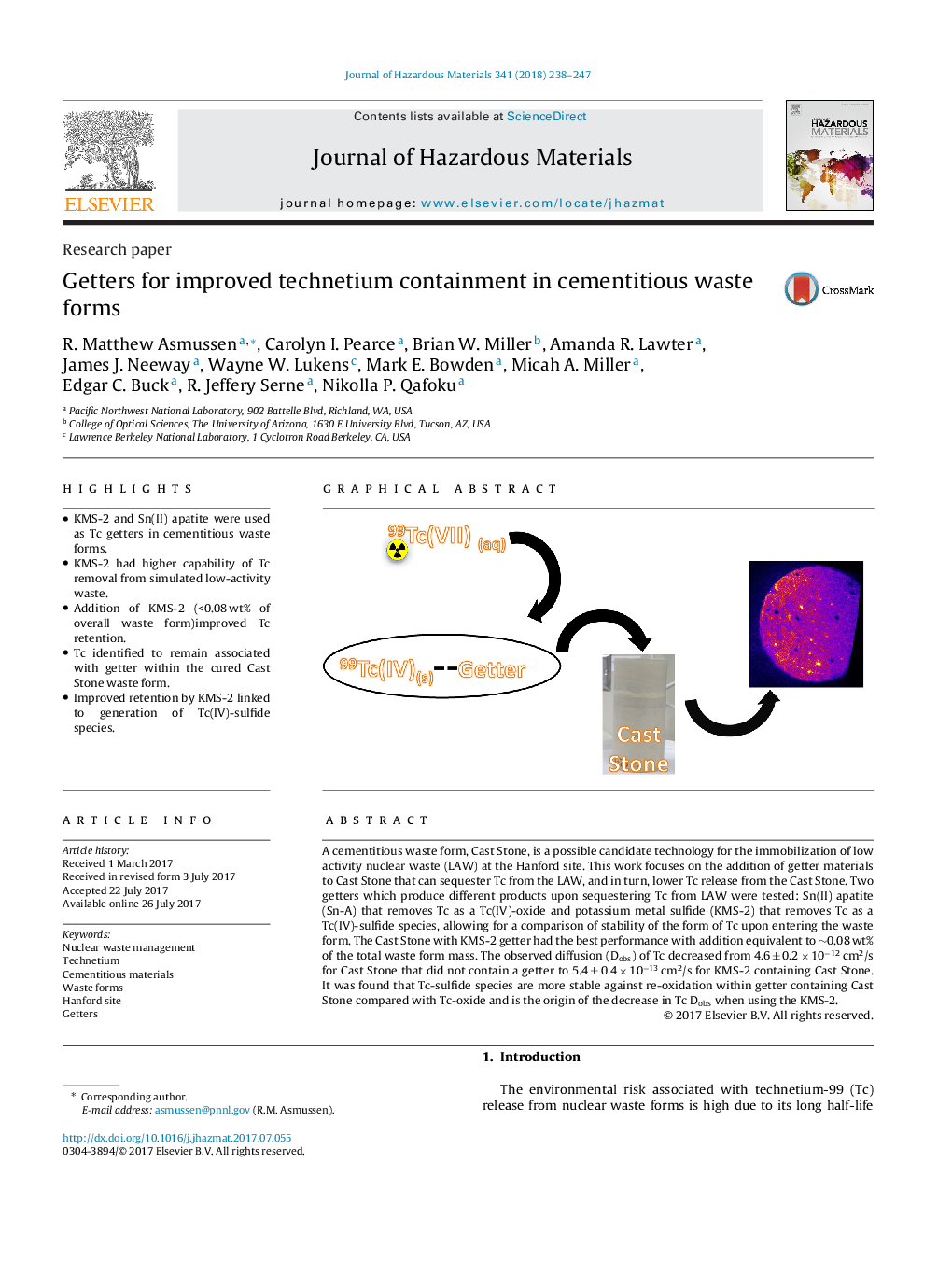| Article ID | Journal | Published Year | Pages | File Type |
|---|---|---|---|---|
| 4979267 | Journal of Hazardous Materials | 2018 | 10 Pages |
â¢KMS-2 and Sn(II) apatite were used as Tc getters in cementitious waste forms.â¢KMS-2 had higher capability of Tc removal from simulated low-activity waste.â¢Addition of KMS-2 (<0.08 wt% of overall waste form)improved Tc retention.â¢Tc identified to remain associated with getter within the cured Cast Stone waste form.â¢Improved retention by KMS-2 linked to generation of Tc(IV)-sulfide species.
A cementitious waste form, Cast Stone, is a possible candidate technology for the immobilization of low activity nuclear waste (LAW) at the Hanford site. This work focuses on the addition of getter materials to Cast Stone that can sequester Tc from the LAW, and in turn, lower Tc release from the Cast Stone. Two getters which produce different products upon sequestering Tc from LAW were tested: Sn(II) apatite (Sn-A) that removes Tc as a Tc(IV)-oxide and potassium metal sulfide (KMS-2) that removes Tc as a Tc(IV)-sulfide species, allowing for a comparison of stability of the form of Tc upon entering the waste form. The Cast Stone with KMS-2 getter had the best performance with addition equivalent to â¼0.08 wt% of the total waste form mass. The observed diffusion (Dobs) of Tc decreased from 4.6 ± 0.2 Ã 10â12 cm2/s for Cast Stone that did not contain a getter to 5.4 ± 0.4 Ã 10â13 cm2/s for KMS-2 containing Cast Stone. It was found that Tc-sulfide species are more stable against re-oxidation within getter containing Cast Stone compared with Tc-oxide and is the origin of the decrease in Tc Dobs when using the KMS-2.
Graphical abstractDownload high-res image (156KB)Download full-size image
